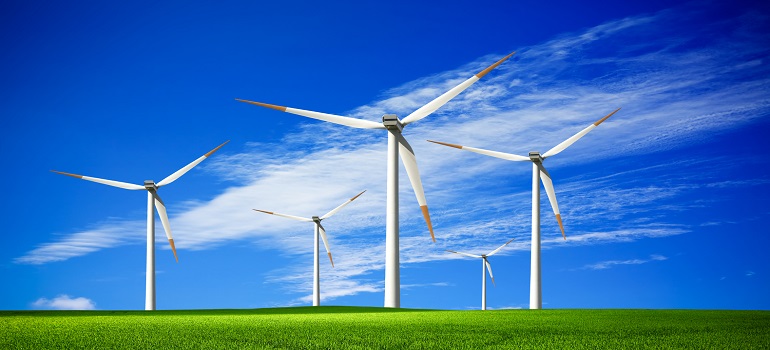
Global wind power capacity additions are expected to sit at an annual average of 71GW from 2019-2023 and 76GW from 2024-2028, according to new analysis from Wood Mackenzie Power & Renewables.
As noted in the report, ‘Global Wind Power Market Outlook Update: Q2 2019′, Wood Mackenzie Power & Renewables has upgraded it’s global wind power outlook by 11GW from 2019 to 2028 – a 1.5% increase from the previous quarter.
Commenting on the forecast, Luke Lewandowski, Wood Mackenzie Power & Renewables Director, said: “A 5GW upgrade in the global offshore sector will yield 129GW of new capacity and a compounded annual growth rate (CAGR) of 26%. Overall, the outlook is positive and global wind power continues to prosper due to both economic and social benefits.”
U.S. wind market benefiting from tax credits
The U.S. market has been upgraded by 16% QoQ, highlighted by a 3.8GW upgrade in 2021 alone.
“Eligible offtakers are rallying to capitalise on the renewable electricity production tax credit (PTC) before the full value incentive expires in 2020 and then phases down. Developers qualifying wind facilities in 2017 are eligible for 80% of the full credit amount, incentivising U.S. wind market growth.
“New state-level targets in the U.S. and the strengthening of renewable portfolio standard (RPS) mechanisms across the country is expected to support post-PTC demand,” added Mr. Lewandowski.
A modest upgrade of 1% QoQ in Latin America is driven by near-term upgrades in Brazil and Mexico. Demand in Brazil’s free market should positively impact expectations from 2020 to 2022, while an uptick in C&I demand in Mexico will support a record year in 2019.
Europe outlook dismal as sub-regions downgraded
“Northern Europe has been upgraded in our forecast by 6%. This should offset an otherwise dismal outlook update in Europe, as the other sub-regions combine for a 2.2.GW downgrade.
“Permitting challenges and undersubscription of onshore tenders in Germany and France have impeded growth. However, an increasing appetite for unsubsidised projects and a proliferation of demand from the C&I segment across Northern Europe both support a modest 0.6% upgrade for Europe QoQ.”
Increasing competition from solar bad news for Africa’s wind market
Slow project development due to political instability, immature support mechanisms and increasing competition from solar results in a 2% downgrade QoQ in Africa.
“Green ambitions in Africa are more prevalent than ever before. Renewable energy is attractive within the region, as wind and solar projects can be built much more quickly than other sources of energy. However, as solar is becoming increasingly economical, Africa’s wind market faces stiff competition,” said Mr. Lewandowski.
Policy deadlines boost outlook in China
Onshore and offshore policy deadlines in China underpin a 2.9GW QoQ boost in the country.
“Onshore developers are rushing to comply with a new policy that requires projects to be commissioned by the end of 2020 in order to capitalise on feed-in tariffs (FIT) before a subsidy-free era begins. Offshore developers must commission projects before the close of 2021 if they are to utilise the current level of offshore FIT.
“The story is not entirely positive in the APAC region, however. Current market conditions in India have bruised the region’s near-term outlook, resulting in a 4% downgrade QoQ. The government-imposed auction ceiling prices and delays in commissioning awarded projects have slowed near-term growth expectations in India considerably – a decrease of 24% from 2019 to 2022.
“Additionally, reliability concerns in Thailand have led to a 37% downgrade over the 10-year outlook, as the government’s focus has turned to other technologies,” concluded Mr. Lewandowski.

